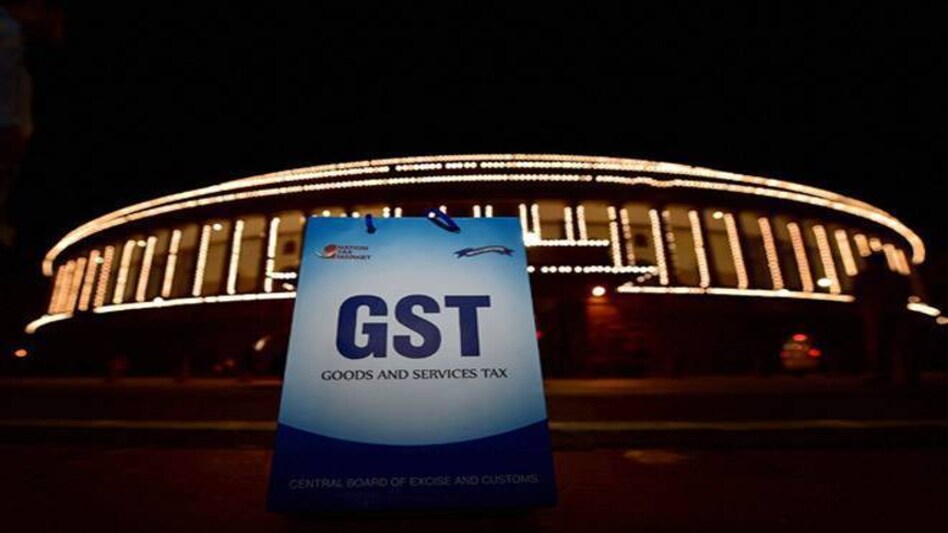

The Goods and Services Tax (GST) completes one year today. Being a major tax reform, critics and supporters alike would sit back and analyse the successes and failures of the new tax regime unveiled amidst a lot doubts, resistance and chaos.
Has the government achieved any of the targets that it had set when the tax overhaul was planned or has it just managed to hurry through a 'reform' without any proper planning as many critics point out?
Let's look back at some of the successes and failures of GST in the last one year:
Successes
Broadening of tax base: In one year, the GST has already seen the number of registered tax payers jumping to over 1.12 crore from 64 lakh under the earlier tax regime. This in itself is a 40% increase in the number of tax-payers. This is no mean feat by any standard.
"A total of 1,12,15,693 taxpayers stand registered with the GST system today in which 63,76,967 are the ones who have migrated from previous tax regimes and 48,38,726 are the ones who have entered the new tax regime in the first year of GST indicating towards a significant increase in active taxpayer base," says Dr A B Pandey, Chairman, GSTN, the entity that controls the GST's IT infrastructure.
Increase in compliance: Despite the many technological glitches in the GST IT system and taxpayers unfamiliarity with the system, the number of returned filed on due date steadily increased over the past one year. The compliance level on due date reached an average of 65% by April this year from around 55-57% in September-October last year.
Tax collection on the rise: The average monthly tax collection in the first year has been around Rs 90,000 crore, a steady increase after the monthly tax collections fell below Rs 85,000 crore in December 2017. Tax collected for the month of April was Rs 94,000 crore better than the first nine month average of Rs 89,000 crore. Experts believe with e-way bill at place and the IT system finally settling down this is only going to improve.
However, it is still below the Rs 1.04 lak crore necessary to achieve the Centre's budget target for GST collection of Rs 7.44 lakh crore.
Failures
Underprepared IT system: The biggest failure of GST implementation has been the unpreparedness of the IT backbone. It led to a lot of confusion, delays and deferments. The invoice uploading has to be delayed, refunds are getting delayed because the absence of many features in the IT system, a roper return filing mechanism has been not been in place yet.
Too many tax rates: Almost all experts and commentators including Finance Minister Arun Jaitley believe that India cannot have a single rate GST, but six GST rates - 0%, 3%, 5%, 12%, 18% and 28% -- is nowhere near the kind of GST this government set out to implement. This has only compounded the confusion of taxpayers many of whom are still facing problem complying with the GST.
Refunds still in mess: GST refunds mechanism remains a weak link in the whole GST system. Exporters are specially finding it difficult to get their refunds on time. A lot of this is because of the problem in the GSTN's software.
"More than Rs 10,000 crore could be stuck due to software challenges. There are exporters who have been waiting for last 12 months for their refunds and there are exporters, who are unable to file his claim due to non-modification of the software," says Dr Ajay Sahai, director general and CEO of Federation of Indian Exporters Organistaion (FIEO).
The law requires that 90 per cent of the refunds claimed should be provisionally granted within seven days of submission of application, and 100 per cent should be granted in two months. Experts say that the system as laid down in the law is not at all functional.
Return filing system yet not in place: It has been more than a year and the return filing mechanism is yet to be in place. The matching system, the cornerstone of GST and a key to its success is yet to be in place. Government is provisionally giving ITC credits, and there is fear that many of the ITC claims could be fake and fictitious.
The final return filing system, which would have the invoice matching system, may take another one year to be in place.
Too many changes: Too many changes in GST law and tax rates within a year have already unsettled taxpayers as well as the GST Network, the IT backbone of GST. There have been more than 400 notifications, over 100 circulars and FAQs issued so far. Already new rate categories have been carved out, products and services have been moved from one tax bucket to another, the list under 28% tax bracket has been drastically cut. The refund filing mechanism, the due dates and the forms have been changed several times. There are already talks of many more changes in the future, many of which are against the architecture of GST.
Issac Thomas, finance minister of Kerala, told Business Today, "There is already talk of all sorts of changes like special cesses, incentives, etc which are against the architecture of GST. There are discussions changes in the rate structure. You have not been able to finalise your return form within a year, e-way bill has just came into existence, one does not know for sure if annual returns would be there. In the absence of all these, there is no way you can scrutinise any revenue. Let the things settle down first."